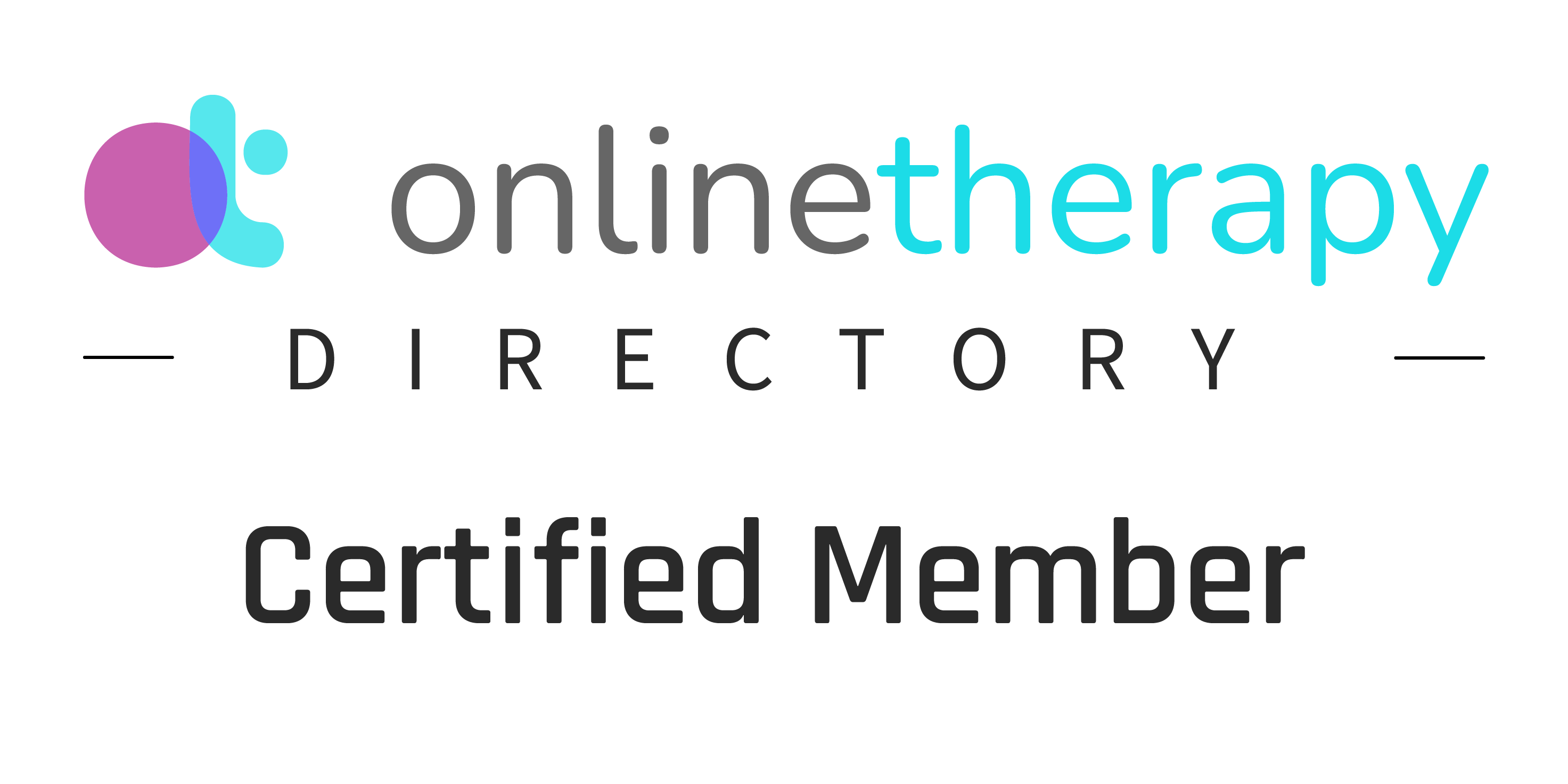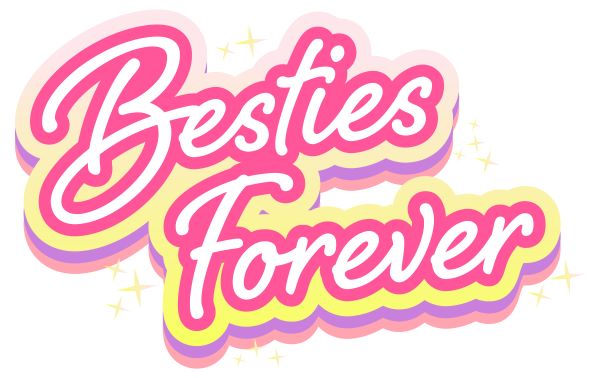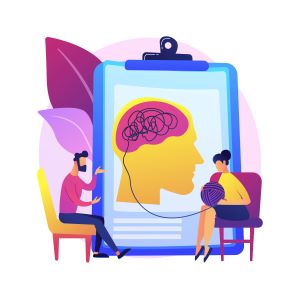Did you know that mood swings is a symptom of at least seven mental health disorders? Same with inattention or hyperactivity in children occur in at least 8 disorders.
So how can a practitioner tell the difference? That’s the problem! Have one client, 10 different counselors, psychologists, psychiatrists and social workers and you will have as many as 10 different diagnoses.
Purpose of Diagnosis
You get the sniffles, a cough, fever, running nose and decide to go to the doctor. They run tests to determine if your symptoms are caused by virus or bacteria. Then once the doctor narrows down the cause, they then decide a course of action which often includes antibiotics or antiviral medications.
This is a great system to determine what the problem is with our bodies.
But in mental health, this is a huge problem!
Medical Model
The process of determining the disease of the body is called the medical model of care. The problem in the body is a result of a disease process whether the causes come from outside attack or the genetic issue. The idea is that the offending agent is identified, treated and then stopped.
Problem in Mental Health is that there isn’t a blood test one can take to find the offending agent. The causes of the so called illnesses aren’t a bacteria or virus or genetic mutation. It isn’t caught like the common cold. It isn’t contagious and quarantining won’t stop it or the spread.
However the assumption in the medical model is that there is a disease process going on and that there needs to be a biological solution.
Big Lie #1
There are biological reasons for most mental health disorders.
Imagine that go to your PCP because after losing your job, you found it hard to look for work, you aren’t showering everyday and find yourself staring at the ceiling vs completing job applications. Your partner was supportive and now getting annoyed as the bills pile up and yet you still scroll through social media vs complete job applications or sleep away the days and pick fights with your partner.
After listening your PCP tells you that you have depression and that means that the levels of a neurotransmitter is low and that you have a chemical imbalance. The PCP prescribes you an antidepressant and sends you home. You believe that now you are somehow messed up. Yep, there is something “wrong” with you and that you aren’t like your partner or your PCP that doesn’t have anything “wrong” with them.
Now if it were true that you have a chemical imbalance then taking an antidepressant would fix the depression just like antibiotics cure strep throat. The problem is that it doesn’t work that way.
Trail and Error
If you have gone to a psychiatrist or medical provider and given medication for depression, anxiety or a host of other issues, you likely were given several medications. It has been my experience that people are given a variety of medications or switched around with meds trying to find something that works. Many times there are improvements, sometimes there isn’t and a few times the person is worse off.
In those times when the medications don’t help at all, that can leave a person thinking that they are so messed up that not even medications can help. The medical model after all says that you have a disorder or disease and therefore a biological solution is the solution.
Dis-Ease vs Disease
Now let’s say you went to a therapist that subscribes to the Dis-Ease model and that what you are experiencing isn’t about a disease but about your reaction to losing your job and maybe a pattern of getting down when bad things happen. Likely you would begin working on your reactions to losing your job. A change in your mindset. Add a set of new actions such as following a schedule to bathing, working out, etc. From the dis-ease model, there isn’t anything wrong with you but instead you are reacting to something in your life in ways that anyone could react. then we can work on solutions that work for you.
Big Lie #2
Someone HAS a mental health disorder
The Diagnostic Statistic Manual of Mental Health Disorders or DSM is the guidebook that mental health practitioners use to determine the disorders that clients present with. The majority of the disorders are most often reactions to something vs a disease. In other words, we do these disorders vs have the disorders. There are a few notable exceptions which are true disease processes such as schizophrenia or autism.
A quick way to illustrate this is a trauma reaction. Many people when exposed to a life threatening event may present with certain symptoms: nightmares, flashes during the day of the experience, avoidance of the activity (not driving after a bad car accident), hypervigilance, mood swings, irritability and depressed moods. These can become so severe that they find it challenging to go to work and do day to day events.
Not every person who goes through a bad experience will present with these symptoms but enough people do to warrant a diagnosis in the DSM. Clearly these symptoms aren’t a biological disease process but a reaction to an event or many events over time.
Another example is a so called eating disorder. Often a young persons living in either a chaotic environment or a controlling environment begin to restrict food as a means to exert control. Or they can be criticized or sexually abused and develop an inaccurate view of their body and looks and restrict food. The bottom line is that the young person is reacting to something and then acting on that reaction. Their course of action can be very problematic in their lives and in the case of eating disorders can be life threatening.
Let’s test the brain and emotional responses
Think back to a time that you had a negative reaction to something. Complete the following Feeling Behavior Chart:
| What happened | What popped into your mind about what happened | How did you feel emotionally and what did you do? |
| Example: My husband stayed out late and came home drunk. | Why didn’t he call me or text me? I was so worried about him. Then he got drunk again? That’s it! I’m done! | Anxious and then angry. I made him sleep on the couch and told him that he better stop or else. |
In the example, the wife was angry in reaction to her husband getting drunk. Now this isn’t likely going to have the wife going to her PCP or seek therapy about her anger issues. It is an illustration that much of why people present for therapy is that they are reacting to something(s) in their lives and their responses are not helpful. The ways that their reactions may be unhelpful: 1. don’t solve the problem, 2. may create a set of new problems and 3. can be stressful to other people in their lives. When we realize it is a response then we can work on the reasons for the responses.
Big Lie #3
You have a disease.
This is a line that divides people between mentally healthy and mentally ill.
Because the medical model assumes that there is a biological underpinning to all disorders then that is applied to a person who is having a difficult time with something(s) in life. The message is that mentally fit people wouldn’t struggle with this thing and only those with something wrong with their brain or body will struggle.
This lie causes lots of issues:
Us vs Them
Sadly when we erroneously believe that for some reason for a group of folks to struggle means that they are different from another group, there will be an us vs them. Someone once posted about how they were so glad that they weren’t mentally ill because they wouldn’t shoot someone in response to a mass shooting. In this person’s mind mass shooters must have mental illness and since the poster wasn’t mentally ill that they are somehow immune from aggression.
During staffing of cases when I was a supervisor I reminded the staff that we are one bad event from potentially responding like our clients. I wanted to instill that there is no line. Whenever enough things occur that exceed our skills to cope, all of us are likely to respond in unhealthy ways. When we think in terms of illness then there begets stigmas and shame.
Owning the Diagnosis
Sometimes someone has been diagnosed with a disorder gains as a result. Since they HAVE this disease then that is the reason for so many behaviors. This can look like, “I have a substance dependence so of course I used,” or “I yelled at the clerk because of my mood disorder.” It isn’t surprising that this is a reaction to having a disorder because the assumption that there is a biological cause to the disorder.
Shame
When we are told and then believe that something is wrong with us, one emotional response is shame. Makes sense. Related to that make believe line of mentally fit vs mentally ill, still an overwhelming part of the population believes that mentally ill people are dangerous so to admit to having a problem is shameful.

Let me ask you, which would you think is less shaming? Would you prefer to believe the medical model that we have a disease that is an indication of something wrong within us? Or would you prefer to subscribe to the dis-ease model that most of what we experience is us trying to cope with circumstances beyond our coping at the moment? Hopefully you said the second because it isn’t a deficiency of our body but of our coping. We cannot exchange the body that we are born with but we can learn coping tools.
Big Lie #4
Being diagnosed with different issues at different times by different people.
Misdiagnosis is a big problem in mental health. Medical model requires a diagnosis, course of treatment and measurement of outcomes. The problem is that there are no blood tests, scans or anything other than the manual of lists of symptoms and a guide to determine if it is this disorder or that disorder.
For several years my main role for the clinic that I worked for was assessing and diagnosing clients who came in for services. Considering that this diagnosis would impact this child or adult from their jobs, school and health care, it was important to be thorough in the brief time that I saw the client.
In as quickly as possible I had to decide if, for example, the inattention or hyperactivity of a child was ADHD, ADD, mood disorder, anxiety, trauma response, allergies, or part of autism and though not as common, drug use by mother during pregnancy or maybe some other neurological issue. Most of the time, doctors don’t have that long to work with someone. If the patent answers yes to a certain amount of symptoms on a checklist then they are diagnosed with ADHD or ADD. Often this diagnosis comes with stimulant medication which is a controlled substance.
Problems with misdiagnoses
Often then the misdiagnosed child is medicated and then doesn’t respond well. The diagnosis isn’t challenged, but instead the meds are changed, and changed and changed. All the while the child is experiencing side effects and the reasons for the behaviors aren’t being addressed. If a child comes out of a chaotic home, the exaggerated play or hyperactivity may be a way that they have learned to get attention.
The meds aren’t going to fix that. Inattention is often associated with anxiety. It isn’t because the child isn’t paying attention, they are, but it is often hypervigilance so they are paying attention to the surroundings and less on what the teacher is saying. ADHD medications aren’t going to fix that.
Also client reporting can be problematic. Though not deliberate, they may not recognize that they are doing something that would help the clinician to distinguish one diagnosis or another. Sometimes it is deliberate. Shame of having to come in may be a cause of minimizing issues and symptoms. Also these diagnoses are in their medical record and can have an impact for work.
Not only are there a lot of variation in diagnoses, diagnoses themselves have changed over the years. I started the DSM IV was the manual that we used to make diagnoses and now we are up to the DSM V. In 1952, the first DSM was published and homosexuality was classified as a sexual deviancy. It was changed and finally removed as pathological in 1980 with the DSM III.
Making a Change
Seeing issues related to emotions as reactions to vs biological anomalies can be helpful. The difference between a disease vs dis-ease. If we are reacting to something then we can learn to change our reactions and thereby change our emotional responses. I see this happen every day!
Disclaimer: Medications can be helpful for many people and I’m in no way suggesting that using medications is wrong. Instead of relying on medications as a primary treatment we may find that there are many helpful alternatives. These alternatives may increase recovery rates, relapse rates and long term well being and it begins by seeing mental health differently.
If you would like to receive updates on new stories sign up today.
The form you have selected does not exist.
Would you like to learn more about trauma and the brain and how we react to trauma experiences? Click here for a free webinar. Yes, it really is free!
If you would like to know more about how to work with me, Click here.
Want to email me? Click HERE.
 Skip to content
Skip to content


